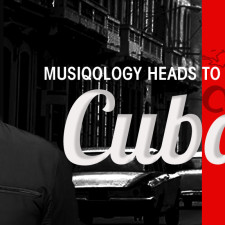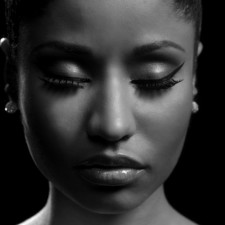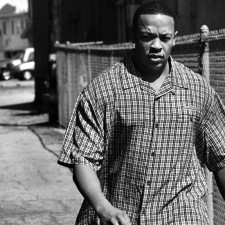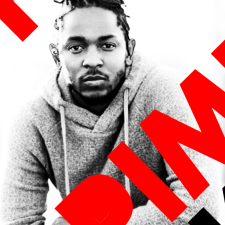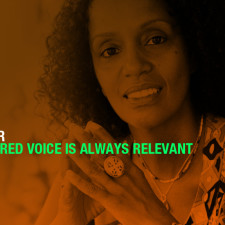Guest Writer: R. DiSimone
At the 53rd Annual Grammy’s a few weeks ago, John Legend won best R&B album for Wake Up!, a collaboration with Philadelphia hip-hop group the Roots. The Roots themselves also got a Grammy nomination for best rap album (How I Got Over, released this past June). However, it begs the question: Why (or indeed, how) is an active, vibrant hip-hop group like the Roots collaborating on a neo-soul throwback with John Legend? The answer lies in the Roots’ emphasis on the aesthetics of musical creation over method or content.
In Joseph Schloss’ Making Beats: the Art of Sample Based Hip-Hop, the author discusses at length the aesthetic side of creating beats. From his extensive research and interviews with figures in the hip-hop world, Schloss asserts that there is a sentiment in the producer community that reliance on live instruments over sampling is a kind of “aesthetic cheating”. Some of Schloss’ interviewees argue that live instruments can act as a supplement to a sample; for instance, Mr. Supreme claims that a sampled bass line can benefit from live bass augmentation in order to “fatten it up”. Deejay Strath Shepard, on the other hand, advocates hip-hop purism, stating that only “samples, a deejay, records, beats, [and] digging” constitute real hip-hop. However, the idea of hip-hop based purely on the use of live instruments is, to most producers and deejays, unheard of. Or, more accurately, almost unheard of. Though all who Schloss interviewed on the subject felt that most “real” hip-hop used samples, more than one of the interviewees cited one particular exception: The Roots. The Roots, whose songs rely primarily on live instruments, prove that “real” hip-hop can be made without a sampler.
Deejay Karen Dere proposes that what makes The Roots the exception to the sampling rule is that “they all understand the hip-hop aesthetic.” The band spends exorbitant amounts of time, effort, and money crafting every timbre and tone until they have exactly the sound they want, sparing no expense to “make things sound nasty, to get live instruments to bang like they were samples.” As testament to this, the liner notes of the 2002 album Phrenology delineate the group’s protracted struggle to tweak the song “Break You Off” to perfection; they spent close to $300,000 and five months to get the song to sound just right. Similarly, on 1999’s Things Fall Apart, the band employed the services of Philadelphia native DJ Jazzy Jeff to lay down “perfect polyrhythmic scratching patterns” on “The Next Movement”, incorporating authentic DJ scratches into the live instrument mix. The band’s excruciating attention to sonic detail can also be seen in the ending section of “You Got Me”, in which the drums and bass crash into an impossibly precise drum ‘n’ bass break, made all the more impressive by the fact that it is live, and not a sample. In a 2009 interview, The Roots’ drummer and bandleader Questlove (Ahmir Khalib Thompson) commented on his thoughts regarding hip-hop aesthetics, concluding that the one’s approach in music making is irrelevant “as long as the music’s funky and true and our art is still represented”.
In addition to sound, The Roots place a lot of emphasis on the structure of their compositions, ensuring that their songs adhere to protocols of sample-based hip-hop. Karen Dere remarks that unlike most instrumentalists, The Roots don’t over- indulge themselves with improvisation and jamming; instead, they make a point to “keep the groove up and keep a certain beat going.” Wayne Marshall elaborates on exactly what it means when The Roots “keep the groove up” in Callaloo, describing the “two-to-four-bar funk riffs and jazz progressions” played by the band that parallel what traditional hip-hop producers tend to sample. Marshall goes on to comment on The Roots’ knack for layering backing tracks underneath the vocals, emphasizing the band’s uncanny ability to keep their instruments in check so as to never overshadow the MC. Even when the band experiments with structure, they maintain a connection to the tried and true “sample structure”. For example, “The Next Movement” features a seven bar verse, quite peculiar given that the standard rap verse is eight or sixteen bars. However, The Roots maintain a connection to standard hip-hop structure in spite of their experimentation by incorporating a four bar inside line, a very standard hip-hop convention.
indulge themselves with improvisation and jamming; instead, they make a point to “keep the groove up and keep a certain beat going.” Wayne Marshall elaborates on exactly what it means when The Roots “keep the groove up” in Callaloo, describing the “two-to-four-bar funk riffs and jazz progressions” played by the band that parallel what traditional hip-hop producers tend to sample. Marshall goes on to comment on The Roots’ knack for layering backing tracks underneath the vocals, emphasizing the band’s uncanny ability to keep their instruments in check so as to never overshadow the MC. Even when the band experiments with structure, they maintain a connection to the tried and true “sample structure”. For example, “The Next Movement” features a seven bar verse, quite peculiar given that the standard rap verse is eight or sixteen bars. However, The Roots maintain a connection to standard hip-hop structure in spite of their experimentation by incorporating a four bar inside line, a very standard hip-hop convention.
It is The Roots’ understanding of the traditional style and structure of sample based hip-hop that allows traditionalists to embrace their use of instruments. As producer Samson S. put it, “They [The Roots] don’t have a peer… There ain’t too many other live instrument hip-hop groups that sound as good as them.” Doubtless, that’s why John Legend wanted to work with them too; even outside their hip-hop comfort zone, the Roots kick like few other bands out there.
Tags: Grammy's, Hip-Hop, Joe Schloss, John Legend, Questlove, Samples, The Roots


 Share On Facebook
Share On Facebook Tweet It
Tweet It


